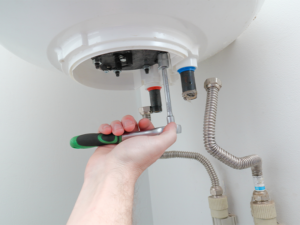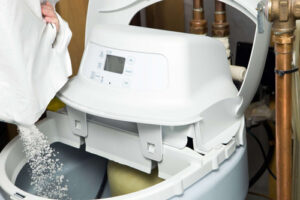Most of us are somewhat aware of the most common contaminants found in municipal drinking water systems – lead, heavy metals, e. Coli and other bacteria, ammonia, and sediment. Some contaminants are relatively benign and affect only taste or smell, while others are quite dangerous to our health, particularly for young kids and expectant mothers.
Some issues do rise to the level of national news, such as the 2016 lead crisis in Flint, Michigan, but many issues are not widely publicized. Even though we generally accept a certain level of risk in our day-to-day activities, like driving a vehicle or cooking on a hot grill, it can be jarring to learn that the supposedly safe and “clean” water that we drink, clean with, and wash our bodies with may be harmful to our health.
Not your everyday contaminant
One thing that would surprise many people is the common presence of pharmaceuticals in our drinking water. We may understand that lead can get into our water from old lead pipes, and bacteria may be present because of sewage contamination. Conversely, it’s harder to wrap our heads around the idea that many of the active ingredients contained in the medicines that are so carefully (in most cases) distributed under medical supervision, may be entering our bodies simply through the water we drink.
In the U.S., one study from 2017 detected dozens of different drugs in municipal water supplies AFTER treatment, based on a sample of 25 water treatment plants. You may initially feel outraged at the idea of people getting rid of old pills by throwing them down toilets and garbage disposals (which does happen), but the majority of drugs found in municipal water supplies are simply there via excretions from our bodies rather than poor disposal practices.
This happens because drugs, as foreign chemicals, are never 100% processed in the body, and therefore emerge along with other waste materials. There is also some entry of pharmaceuticals into water systems from animal feeding runoff, drug-manufacturing activities, and leaching from municipal landfills containing drugs disposed of through residential waste collection.
If it’s not regulated, it may not be measured or treated
While there are authorized medicine disposal initiatives and community pharmacy programs designed to prevent deliberate disposal problems, the level of pharmaceuticals in drinking water is not regulated at a state or national level. As such, treatment facilities have no obligation to measure or manage them in the water they deliver to households. This happens to be true of many industrial chemicals and pesticides as well!
The kinds of pharmaceuticals found in trace amounts in some water systems includes contraceptives, antidepressants, antihistamines, hormones, and antibiotics. In most cases, the amount of these materials found in residential water supplies is unlikely to be harmful to humans at any given moment, but some experts are concerned about the longer-term effects of chronic exposure. There is concern that the accumulation in the body may reach toxic levels over time.
Some effects may be direct, such as having the same effect as if the medication was being taken as prescribed. More seriously, there may be interaction with medications that ARE being taken under medical supervision, either by lowering the prescribed medicine’s effectiveness or causing unexpected side effects through complex and unintended chemical interactions.
Indirectly, the buildup of antibiotic residues in water supplies interacts with crops and food supplies, leading to increased bacterial resistance, and growing risks of untreatable infections and superbugs.
Just say no to drugs (in your drinking water)
As you consider the possibility (or horror) of ingesting a medicinal cocktail made up of unknown pharmaceuticals taken or discarded by your neighbors, know that you can do something about it. Installing water treatment equipment in your home to make up for the limitations of municipal treatments provides an additional level of water filtration.
Point-of-entry (POE) filtration systems that use activated carbon and reverse osmosis to remove pharmaceuticals as well as a wide range of other contaminants from all your home’s water systems are effective and may be more affordable than you think.
Of course, you can also do your part by making sure that you dispose of your own unused medications properly, including regular participation in Take Back programs. Recognizing that your water supply is affected by the actions and decisions of everyone in the community, no matter what you do yourself, means that the only real solution for you and your family is a good treatment system that takes care of the problem before the water even gets into your home.
At Hague Quality Water of Maryland, we can help you assess your water quality, repair or replace well parts and plumbing fixtures, install the best water treatment solutions, and provide ongoing maintenance for your home’s entire water supply system. We are dedicated to providing families and businesses not only safe water, but also peace of mind.




